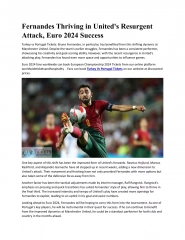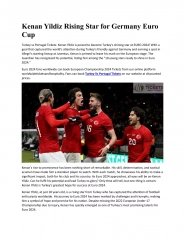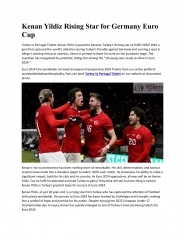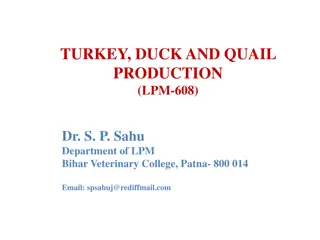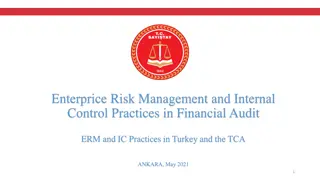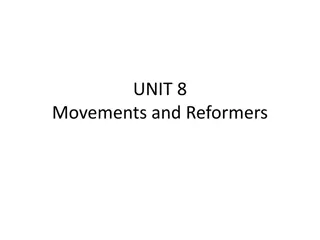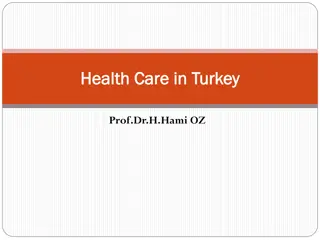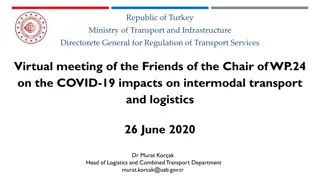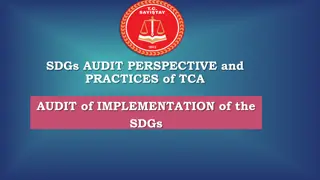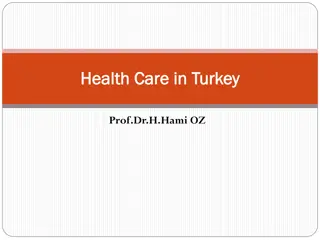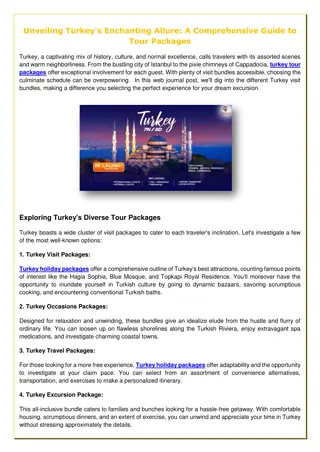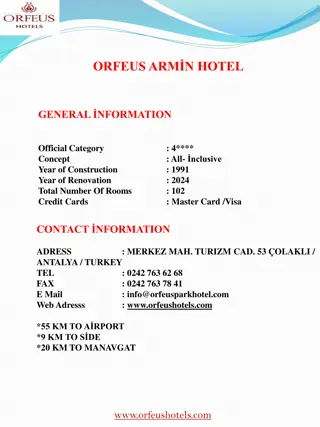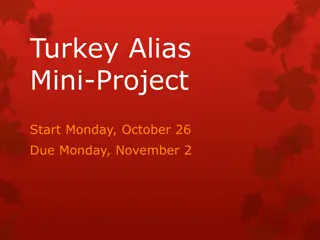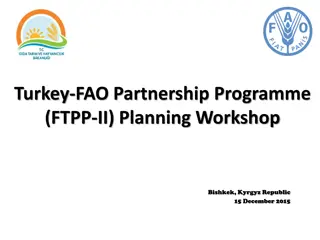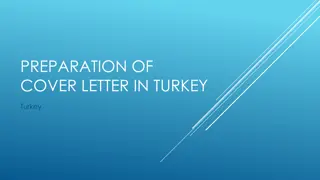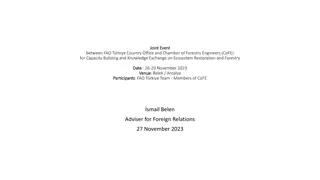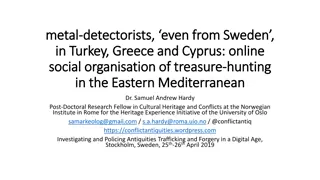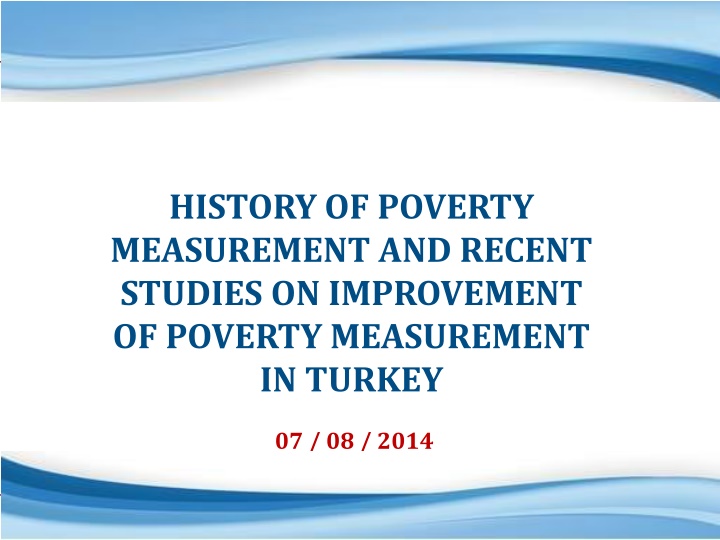
Improvement of Poverty Measurement in Turkey: Recent Studies & Progress
Explore the history of poverty measurement in Turkey and recent studies focusing on enhancing poverty measurement techniques and indicators. Discover the significance of absolute poverty, relative poverty, persistent at risk of poverty, and material deprivation in Turkey. Learn about the ongoing efforts to revise and improve the measurement of poverty in the country, including the use of multidimensional poverty analysis. Stay informed about the key findings and results of poverty studies conducted since 2002, including the calculation of different poverty lines and indicators.
Download Presentation

Please find below an Image/Link to download the presentation.
The content on the website is provided AS IS for your information and personal use only. It may not be sold, licensed, or shared on other websites without obtaining consent from the author. If you encounter any issues during the download, it is possible that the publisher has removed the file from their server.
You are allowed to download the files provided on this website for personal or commercial use, subject to the condition that they are used lawfully. All files are the property of their respective owners.
The content on the website is provided AS IS for your information and personal use only. It may not be sold, licensed, or shared on other websites without obtaining consent from the author.
E N D
Presentation Transcript
HISTORY OF POVERTY MEASUREMENT AND RECENT STUDIES ON IMPROVEMENT OF POVERTY MEASUREMENT IN TURKEY 07 / 08 / 2014 Labour and Living Conditions Division 1
Contents Part 1: History of Poverty Measurement In Turkey Absolute Poverty Relative Poverty Persistent at Risk of Poverty Material Deprivation Part 2: Recent Studies and Future Prospects for the Measurement of Poverty in Turkey Need for Revision Working Group Workshops and meetings Decisions made (What will be done?) Improvement Studies on Multidimensional Poverty Labour and Living Conditions Division 2
Poverty Studies The calculation of different poverty lines for different purposes, is extremely important in terms of better poverty analysis. For this reason, TurkStat has done detailed studies using different data sources and methodologies Labour and Living Conditions Division 3
Poverty Studies Results have been published since 2002 yearly Main indicators Absolute poverty (food + non-food) World Bank poverty thresholds (1 $, 2.15 $, 4.3 $ a day by PPP) Relative poverty Persistent at Risk of Poverty Material deprivation Labour and Living Conditions Division 4
Absolute Poverty Data Source: HBS Since 2002 Estimation level: Turkey, urban and rural areas Profile variables: Household size Household type Economical activity branches (sector) of individuals Employment status of individuals Educational status of individuals Labour and Living Conditions Division 5
Absolute Poverty The poverty study based on the previous methodology was used for the 2009 HBS data for the last time and the results were announced in January 2011. Afterwards; Turkish Statistical Institution has started evaluation studies in collaboration with local and international experts in order to reveal the socio-economical situation of Turkey and enable the international comparisons. Within this scope; studies on feasible data sources and new estimation methods and works on calculation of new indicators are ongoing. Labour and Living Conditions Division 6
Absolute Poverty Until the outcome of these studies, poverty rates in terms of $2,15 and $4,3 -a-day according to PPP, especially used in international comparisons, has been continued to be announced. Labour and Living Conditions Division 7
Absolute Poverty Labour and Living Conditions Division 8
Absolute Poverty The poverty rates according to poverty line methods Methods Percentage of poor individuals (%) 2002 2003 2004 2005 2006 2007(*) 2008 2009 2010 2011 TURKEY Below 2,15 $ per capita per day (1) 3,04 2,39 2,49 1,55 1,41 0,52 0,47 0,22 0,21 0,14 13,33 8,41 Below 4,3 $ per capita per day (1) 30,30 23,75 20,89 16,36 6,83 4,35 3,66 2,79 URBAN Below 2,15 $ per capita per day (1) 2,37 1,54 1,23 0,97 0,24 0,09 0,19 0,04 0,04 0,02 Below 4,3 $ per capita per day (1) 24,62 18,31 13,51 10,05 6,13 4,40 3,07 0,96 0,97 0,94 RURAL Below 2,15 $ per capita per day(1) 4,06 3,71 4,51 2,49 3,36 1,49 1,11 0,63 0,57 0,42 Below 4,3 $ per capita per day (1) 38,82 32,18 32,62 26,59 25,35 17,59 15,33 11,92 9,61 6,83 (1) Here 618 281 TL, 732 480 TL, 780 121 TL and 0,830 TRY, 0,921 TRY, 0,926 TRY, 0,983 TRY, 0,917 TL, 0,990 TL and 1,004 TL which are the equivalents of 1 $ purchasing power parity (PPP), are used for 2002, 2003, 2004, 2005, 2006, 2007, 2008, 2009, 2010 and 2011 respectively. (*) New population projections are used since 2007. Labour and Living Conditions Division 9
Relative Poverty Data source: SILC Since 2006 The methodology established by following the processes of EUROSTAT (EU-SILC), Two types of data are produced annually; - Cross-sectional data, - Longitudinal data ( 2, 3 and 4 year panel data). Labour and Living Conditions Division 10
Relative Poverty Estimation level; For cross-sectional data (*) -> Turkey, Urban, Rural and NUTS 1 level (12 regions) For panel data -> Turkey Poverty threshold: using certain ratio (40%, 50%, 60% and 70%) of national median equivalised disposable income. (* ) Estimation level of the cross-sectional component will be Nuts 2 (26 regions ) with 2014 SILC. Labour and Living Conditions Division 11
Relative Poverty Poverty treshold, number of poor and poverty rate by poverty treshold methods, Turkey Poverty threshold (TL) 2006 50% 2 351 60% 2 821 2007 50% 3 041 60% 3 649 2008 50% 3 164 60% 3 797 2009 50% 3 522 60% 4 227 2010 50% 3 714 60% 4 457 2011 50% 4 069 60% 4 883 2012 50% 4 515 60% 5 418 Number of poor (Thousand) Poverty rate (%) Methods 12 548 17 165 18,6 25,4 11 163 16 053 16,3 23,4 11 580 16 714 16,7 24,1 12 097 17 123 17,1 24,3 12 025 16 963 16,9 23,8 11 670 16 569 16,1 22,9 11 998 16 741 16,3 22,7 Labour and Living Conditions Division 12
Persistent at Risk of Poverty Rate Data source: SILC Since 2009 Using 4 year panel data It is defined as the population living in households where the equivalised disposable income was below the at-risk-of-poverty threshold(*) for the current year (last year of the panel) and at least 2 out of the preceding 3 years. (*) 60% of equivalised disposable median income is taken into account in calculating persistent- at-risk-of-poverty-rate. Labour and Living Conditions Division 13
Persistent at Risk of Poverty Rate In the following table, the situations of 1, 2, 3 and 4 refer to population persistent at risk of poverty. Labour and Living Conditions Division 14
Material Deprivation Rate Data source: SILC Since 2006 Percentage of population with an enforced lack of at least four out of nine material deprivation items in the economic strain and durables dimension. Labour and Living Conditions Division 15
Material Deprivation Rate The nine items considered are: 1) Unexpected financial expenses, 5) Keeping home adequately warm, 2) One week s annual holiday away from home, 6) Washing machine, 7) Colour TV, 3) Arrears on mortgage or rent payments, utility bills, hire purchase installments or other loan payments, 8) Telephone (including mobile phone), 9) Car. 4) Meal with meat, chicken, fish (or vegetarian equivalent) every second day, Labour and Living Conditions Division 16
Need for revision Assumptions used with regard to the previous methodology Significant differences due to the assumptions used, Assumptions lose their validity within time, Difficulty in construction of comparable series because of the assumptions in use, Assumptions in use weren t decided by a committee Inadequacy of sample size Number of persons under food poverty threshold Socio-economic characteristics of the poor Regional estimates Labour and Living Conditions Division 17
Improvement Studies TURKSTAT international experts and institutions in order to update its poverty methodology in 2012. started studies in collaboration of local and It is aimed to launch a better way of measuring poverty that reflect social conditions in Turkey, consider all aspects of poverty and enable to compare poverty lines over time and space. Labour and Living Conditions Division 18
Improvement Studies In the scope of improvement studies, a working group has been constructed by TURKSTAT representative from different national institutions and ministries, non-governmental organizationsand unions: consisting of academicians, There are four sub-groups within working group and each one study on differentaspects of poverty Labour and Living Conditions Division 19
Improvement Studies First applications related poverty measurement sub-group focuses on recent methodologies and Second sub-group makes research on how to improve monetary poverty measures. Equivalence scales and its effect on poverty figures are under responsibility of third sub-group. Last sub-group works on non-monetary poverty and factors affecting poverty in Turkey. Labour and Living Conditions Division 20
Joint Workshop with World Bank Date: 19-20 March 2012, Ankara Target: Examining and presenting recent approaches to poverty measurement in the world Participants: International Academicians, Journalists, Representatives of Government Institutes, Confederations and Associations Labour and Living Conditions Division 21
Poverty Measurement Workshop, Antalya T RK YE STAT ST K KURUMU Yoksulluk al tay Antalya 4-5 Kas m 2013 Date: 4-5 November 2013, Antalya Target: Discussing issues for determining the most appropriate poverty mesurement methodology for Turkey Participants: NationalAcademicians, Journalists, Representatives of Government Institutes, , Confederations and Associations Labour and Living Conditions Division 22
Poverty Seminar, Geneva Date: 2-4 December 2013, Geneva Participation: TurkStat has made a presentation regarding the official poverty studies conducted in Turkey. Labour and Living Conditions Division 23
Meetings within TurkStat Some decisions were made according to the results of the working group report and workshops Video conference with World Bank and OPHI experts Date: 28 February 2014 Target: Discussing on the decisions of Turkstat and getting recommendations from WB and OPHI experts Labour and Living Conditions Division 24
What Poverty Indicators will be calculated? Absolute poverty (national poverty line) Relative poverty Persistent at Risk of Poverty Material deprivation Multidimensional poverty Labour and Living Conditions Division 25
What will be done? Absolute poverty will be calculated with revised assumptions according to the recommendations of experts Relative poverty will be calculated as before (necessary for comparison with the EU) Persistent at Risk of Poverty will be calculated as before (necessary for comparison with the EU) Material deprivation will be calculated as before (necessary for comparison with the EU) Multidimensional poverty will be calculated Labour and Living Conditions Division 26
Improvement Studies on Multidimensional Poverty Recently, multidimensional poverty is belonging to Alkire and Foster (2007) which has been widely applied recently by countries, institutions and researches. the most remarkable method of measuring Mexico s official multidimensional poverty methodology, which is based on Alkire-Foster (2007) method, is one of the best practises of multidimensional methods. Having aimed to reflect all aspect poverty and being attracted by Mexico case, TURKSTAT has concentrated more on adopting a multidimensional poverty measures. Labour and Living Conditions Division 27
Need for Multidimensional Poverty Provides measurement of different dimensions of poverty Covering multiple aspects of life Nutrition Education Health Availability of life facilitators Monetary poverty often provides insufficient policy guidance about deprivations in other dimensions Labour and Living Conditions Division 28 Source: estimates by CONEVAL based on MCS-ENIGH 2010.
Measurement of Multidimensional Poverty Decisions to be made on: Dimensions Indicators for dimensions Deprivation threshold for each indicator Weights of indicators Construction of poverty indicator for analysis units Poverty thresholds Labour and Living Conditions Division 29
Measurement of Multidimensional Poverty (OPHI) Dimension 1- Health Weight Indicator/Variable 1/3 Nutrition Child mortality 1/3 Duration of education Education of children 1/3 Electricity Potable water Sewage Floor material Fuel for cooking Assets Weight 1/6 1/6 1/6 1/6 1/18 1/18 1/18 1/18 1/18 1/18 2-Education 3-Life Standards Labour and Living Conditions Division 30
Multidimensional Poverty Measurement in Mexico Not poor and not vulnerable Vulnerable people by social deprivation Wellbeing Income Moderate poor Vulnerable people by income Extreme poor 3 5 6 4 0 1 2 Deprivations Social Rights Labour and Living Conditions Division 31 Source: estimates by CONEVAL based on MCS-ENIGH 2010.
Thank you... Labour and Living Conditions Division 32

